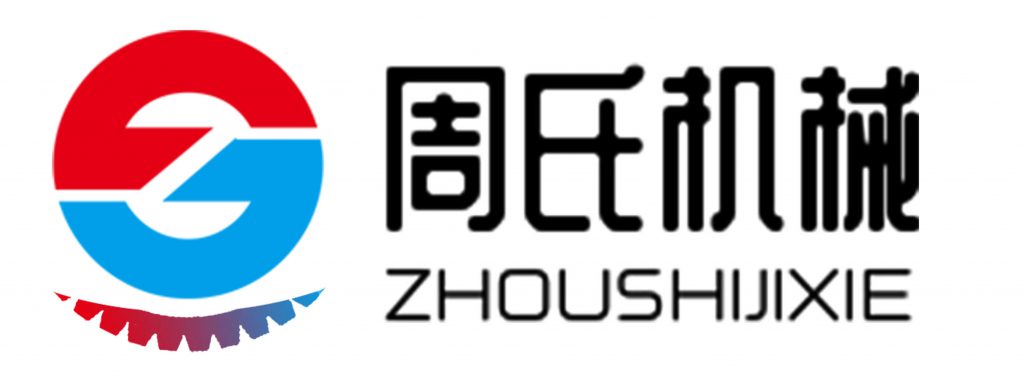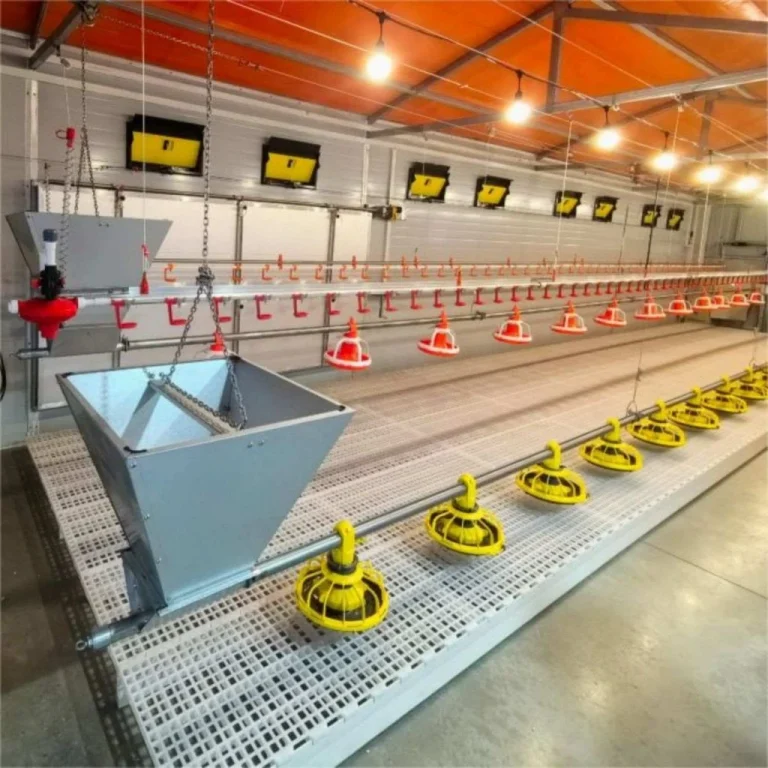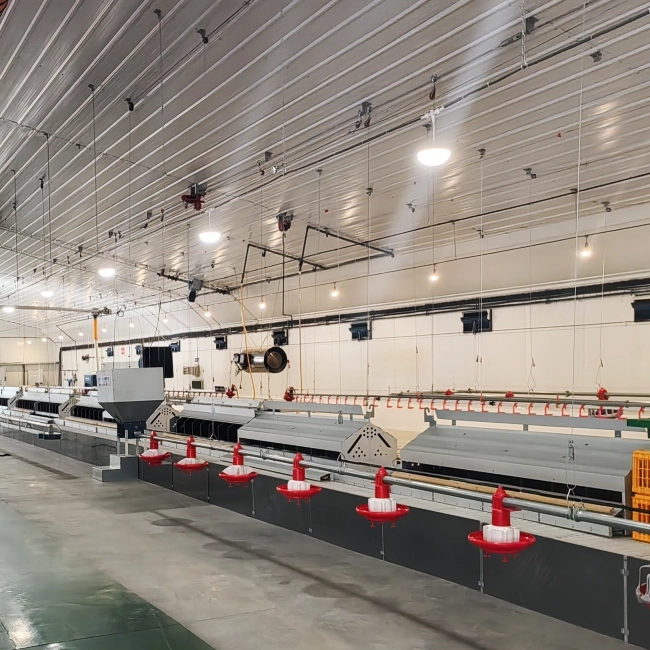Introduction
Cow barn design and layout are essential in promoting the health and productivity of the cows and animal well-being is given priority.Such products like cattle house steel structure is very important. One key area in building cow barns is ensuring that a suitable environment is created that guarantees exceptional animal welfare, as well as financial and environmental considerations. Recent developments in cow barn architecture have led to improvements, in the dairy farming sector by incorporating new materials and technologies to enhance overall operations.
Reason 1: Enhanced Animal Health and Productivity
How Ventilation Systems Reduce Respiratory Diseases
Ventilation plays a role in the design of contemporary cow sheds as it helps keep the air fresh and minimize the presence of harmful gases like ammonia and methane that could affect the respiratory health of cattle negatively. The implementation of ventilation systems ensures a constant flow of clean air within the shed which helps in reducing humidity levels and preventing the transmission of airborne diseases to a great extent. Maintaining an environment with good air quality for cows to live in leads, to fewer respiratory issues and ultimately contributes to their overall well-being and productivity in terms of milk production.
Impact of Spatial Layout on Cow Mobility and Milk Yield
The arrangement of a cow barn plays a role in the well-being and ease of movement of cows on the farmyard grounds today. Day architectural plans give utmost importance to providing sufficient space for cows to move around comfortably – allowing them to rest and move about without any constraints or worries. Creating stressful surroundings is essential for maintaining healthy digestion and boosting milk production levels among the herd. Moreover thought-out layouts help, in minimizing the likelihood of accidents stemming from overcrowding or poorly constructed passageways within the barn.
15% Milk Production Increase Post-renovation
Research indicates that enhancing fashioned cow barns with modern facilities can lead to significant boosts in milk production levels for farmers have observed an uptick of around 15% in milk yields upon upgrading their infrastructures with state of the art ventilation systems and enhanced flooring materials along, with better spatial organization layouts—a clear indication of the positive impact of well designed cow sheds on dairy output.
Reason 2: Reduced Long-Term Operational Costs
Modular Designs Minimize Expansion Costs.
Contemporary cattle barns frequently feature layouts that enable convenient expansion as the herd grows in size reducing initial building expenses and offering adaptability for future growth plans. These modular constructions can be tailored to suit requirements without the need, for extensive remodeling or extra costs.
Durability Advantages of Materials like Galvanized Steel
Selecting the materials is key when building a cow shed as it impacts how long it lasts and how much upkeep it needs to stay in good shape.Galvanized steel is an option because its tough and doesn’t easily rust.Unlike sheds that need more maintenance galvanized steel structures are strong against things like dampness and pests.This means repair work, over the years making it a smart choice for farmers raising dairy cows.
10-year Cost Comparison: Traditional Wood vs. Modern Cow Sheds
Over ten years of comparison study emphasizes the considerable monetary savings linked with new age cattle shelters as opposed to fashioned wooden barns that may have lower initial expenses but necessitate frequent repairs and replacements due to usage wear and tear incidents instead of modern structures crafted with robust materials such as galvanized steel or concrete result in reduced maintenance costs for farmers, in the long run enabling them to accumulate significant savings over time by opting for current building designs.
Reason 3: Environmental Sustainability
Integrated Rainwater Harvesting and Manure Management
In cattle barn design projects today are making sure to prioritize environmental sustainability as a crucial factor. They incorporate rainwater harvesting systems that gather water from roofs and reuse it for cleaning or watering purposes to reduce reliance on water sources. Likewise, manure management systems have been upgraded to turn waste into resources such, as biogas or organic fertilizer. These methods not only help in reducing the environmental footprint but also provide farmers with extra sources of income.
Solar Panel Roofing for Energy Self-sufficiency
Harnessing power by installing panels on the roofs of cow sheds offers an environmentally friendly way, to power lighting systems and ventilation equipment in the facility while also helping farmers achieve energy independence and cut down on electricity expenses substantially.
Ventilation Innovations to Reduce Methane Emissions
Cows releasing methane significantly impact greenhouse gas levels. Modern cow barns, with advanced ventilation systems effectively disperse methane laden air preventing harmful build up and enhancing the sheds air quality while supporting global initiatives to lower agricultural emissions.
Reason 4: Climate Resilience
Hurricane-resistant Designs
A cow shed construction needs to be strong to endure weather conditions in areas frequently hit by hurricanes or strong winds. Contemporary cow shed designs include features that make them resistant to hurricanes like steel frames and aerodynamic roofs. These design elements help the shed stay standing during weather conditions and protect the cows inside. Steel structures are especially beneficial, in situations because of their durability and ability to withstand pressure without deforming. The resilience not only shields the animals but also cuts down on the expenses linked to building damages.
Adjustable Shading/Insulation Systems for Extreme Temperatures
Maintaining the well-being and efficiency of cattle relies heavily on regulating temperature in their living environment. Cutting-edge designs for cow shelters incorporate shading and insulation mechanisms to accommodate different weather patterns. For example, retractable shades offer protection from sunlight and insulated walls aid in preserving warmth during chilly seasons. These advancements work to create an atmosphere, within the cow shelter that promotes cattle comfort minimizes stress, and prevents heat-related illnesses. Efficient temperature control also contributes to ensuring steady milk production year-round.
Flood-prevention Drainage Solutions
In regions with excessive rainfall or flooding risks, it’s crucial to include efficient drainage systems in the design of cow sheds. Modern cow shed constructions typically incorporate raised flooring along with positioned drains to avoid water pooling. This helps reduce the chances of waterlogging that could result in ailments and other health problems for livestock. By integrating flood prevention strategies farmers can ensure a hygienic atmosphere within the cow shed. These designs not only improve animal well being but also lessen the workload associated with upkeep tasks, like cleaning and repairs.
Reason 5: Compliance with Regulations & Certifications
EU Animal Welfare Standards for Space Requirements
Constructive adherence to rules is a crucial element in the construction of contemporary cattle shelters nowadays. The European Union (EU) has set up guidelines for animal welfare that outline precise space criteria for livestock accommodation. These rules guarantee that cows have space to engage in their natural activities like sitting down and standing up freely. Following these guidelines not only boosts animal welfare but also bolsters a farm’s reputation in worldwide markets. Current cattle shelters are planned to keep these regulations in consideration to offer space, per animal without sacrificing structural effectiveness.
USDA Organic Certification Guidelines for Shed Design
When farms aim for USDA Organic Certification, the layout of the cow barn becomes crucial. This certification process involves standards concerning living conditions that support methods, including outdoor access and natural light. Contemporary steel buildings can be tailored to meet these criteria while ensuring resilience and affordability. By conforming their setups to guidelines farmers not only secure certification but also draw in shoppers who value ethically sourced dairy goods.
Introduction to Zeus’s Cattle House Steel Structure
Overview of Zeus’s Steel Structure
The Steel Structure by Zeus Cattle House signifies an era in modern farming construction methods known for their long-lasting nature and versatility Zeus steel buildings are custom-designed to cater to the various requirements of dairy farms. These cutting-edge designs feature modern elements like flexible layouts weather-resistant materials and adherence to global standards. Through the use of forward-thinking engineering strategies. Zeus constructions offers a holistic approach, to establishing productive eco-friendly spaces that prioritize animal welfare.
The utilization of steel guarantees extended longevity while reducing upkeep expenses in contrast to conventional construction materials like timber or brickwork. Moreover, Zeus architectural plans highlight conscious approaches by incorporating sustainable energy technologies such as solar panels and rainwater collection systems into their constructions. These characteristics harmonize seamlessly with expectations for ecological responsibility, in farming practices.
When farmers opt for Zeus Cattle House Steel Structure solutions they can select from a range of options tailored to meet their unique operational needs. Whether they’re looking to grow their herd or comply with regulations these structures provide flexibility while maintaining high standards, in quality and performance. If you need any steel structure, you can contact us.
FAQ
Q: What is a steel-structured cow shed?
In a steel framed cow barn. Built mainly using steel elements, like beams and columns. Advantages include weight and quicker construction compared to traditional methods.
Q: What are the advantages of using a steel structure for cow sheds?
A: There are five reasons below:
Steel structures can withstand weather and pests well which helps them last longer with less upkeep needed.
Construction Speed Advantages; Using prefabricated steel parts allows for assembly on location and greatly cuts down on construction duration.
Steel provides the flexibility needed for designing spans without the need, for internal supports which results in open and spacious interiors perfect for accommodating cattle movement and various farming activities.
Cost Efficiency in steel construction can result in reduced costs, for both building and upkeep expenses.





